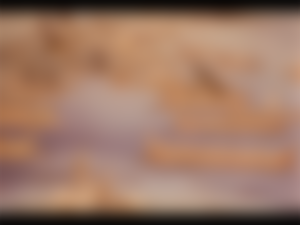Roman Naval Battle
Ancient navy ships were made of wood, waterproofed using pitch and paint, and were propelled by both sails and oars. Ships with multiple rowing tiers, such as the Trireme, had enough speed and maneuverability to slam into and attack enemy ships. The largest ships were the quinqueremes, which consisted of three rows of rowers each, two for the upper two oars and one for the lower oars (about 300 in total). Ships could also be fitted with an instrument known as a platform corvus (raven), from which sailors could easily board enemy ships.

Most warships built for speed were light, cramped and lacking storage space or even a hull for a large unit. Such logistical purposes would be better achieved using troop carrier ships and sailing supply ships. Besides the bronze-clad ram below the waterline in the bow of the ship, other weapons included the artillery ballista, which could be mounted on ships to deliver deadly salvos from an unexpected and less protected flank or at enemy ground positions against other ships. Flameballs (pots of flaming pitch) could also be thrown to destroy the enemy ship with fire instead of hitting it.
Roman naval tactics differed little from those used by earlier Greeks. Ships were propelled by oarsmen and sailed to transport troops, and in naval battles, ships used bronze-wrapped rams to become thrust rams. In real warfare, the sail's maneuverability was limited, and therefore the rowers propelled the ships forward when they were at close range with the enemy.
Sails and rigging were stored ashore to save weight, increase ship stability, and leave more room for sailors. The aim was to position the ram so that it would punch a hole in the enemy ship and then retract it to allow water to enter the submerged ship. Alternatively, a well-meaning blow could break a row of the enemy's oars, thereby neutralizing him.
The best angle of attack to get this type of damage was from the enemy's flank or behind. Due to this, not only maneuverability under the oars, but also speed was a must. Therefore, over time, ships had more and more rowers stacked on top of each other rather than along the length of the ship, making the ship unseaworthy. Thus the triremi of the Greeks' three-level rowing ship evolved from the two-level brirem, and the trireme eventually evolved into the Roman quinquereme.
In response to the pirate threat, especially in the Tyrrhenian Sea, Rome had used naval ships from the early Republic era in the 4th century BC, but in 260 BC, they built their first significant navy in just 60 days. In response to the threat from Carthage, they assembled a fleet of 100 quinquerems and 20 triremes. In typical Roman fashion, the designers copied and enhanced it from a captured Carthaginian quinquereme.
The Romans also acknowledged the inferiority of their seafaring compared to the much more experienced Carthaginians. Therefore, they used the corvus. The Corvus was an 11-metre-long platform that could be lowered from the bow of the ship onto the decks of enemy ships and secured with a large metal spike. Roman troops (about 120 on each ship) could then board the opposing ship and quickly take care of the enemy crew.
The first conflict in which Corvi was used to great effect was the Battle of Mylae on the northern Sicilian coast in 260 BC. The two fleets were equal to 130 ships each, but the Carthaginians, not expecting a major jolt in the Romans' naval warfare, did not even bother to form battle lines.
The Corvus proved to be a devastatingly successful offensive weapon against the irregular Carthaginians, and it was a Roman victory, albeit unexpectedly. The commander and consul, Caius Duilius, was not only delighted to see his rival escape from his flagship in a rowboat, but also won a military victory, Rome's first major naval victory.
The Battle of Ecnomus on the southern coast of Sicily in 256 BC was one if not one of the greatest naval battles of antiquity, and it would show that Mylae was not by chance. Buoyed by their initial success, the Romans had expanded their fleet to now have 330 quinquerems with a total of 140,000 men ready for battle. The Carthaginians set out with 350 ships, and the two great fleets met on the coast of Sicily. The Romans organized themselves into four squadrons arranged in a wedge.
The Carthaginians tried to divert the two Roman fleets in front from the two behind and catch them with a pincer action. However, whether due to lack of maneuverability or proper communication of intentions, the Carthaginian fleet instead attacked the Roman rear transport fleet, while the two leading Roman fleets wreaked havoc inside the Carthaginian centre. Melee combat in the center was of little importance to naval knowledge, and corvii was everything. Victory once again belonged to Rome. Rome lost only 24 ships against Carthage's loss of 100.
Still, the war dragged on as Rome's immediate invasion of North Africa proved to be a costly failure. A remarkable expedition led by Gnaeus Servilius Rufus in 217 BC cleared Italian waters of Carthaginian raiders and the Romans eventually defeated the Carthaginian fleet, but largely because they were able to replace lost ships and men more quickly in what turned into a veritable war of attrition.
The victories were mixed with disasters such as the defeat at Drepna in 249 BC and the loss of 280 ships and 100,000 men in a single storm off the coast of Camarina in southeastern Sicily, but in the end Rome prevailed. The war had cost Rome 1,600 ships, but the reward was well worth it: domination of the Mediterranean. This naval control was useful in Rome's wars with Alexander's successor kingdoms in the Macedonian Wars. For example, between 198 and 195 BC, Rome repeatedly conducted successful naval raids against Macedonia's ally, the Spartan tyrant Nabis.
Now the only threat to Rome was Rome itself, and it was, the civil war devastated Italy. Julius Caesar was victorious, and the remnants of Pompey's fleet became the backbone of the Roman navy, used to good effect in campaigns to invade Britain - the second larger expedition in 54 BC included a fleet of 800 ships.
After Caesar's murder, the fleet ironically came under the control of Pompey's son, Sextus Pompeius Magnus. In 38 BC, Caesar's heir, Octavian, had to assemble another fleet to meet the threat of Sextus. With Marcus Vipsanius commanding Agrippa, 370 ships were sent to attack Sicily and the Sextus fleet. Once again, the lack of well-trained sailors forced commanders to innovate, and Agrippa went from maneuverability to brute force, using a catapult-driven grapple on his ships.
This device allowed ships to be winched into close quarters to facilitate embarkation by sailors. The weapon was devastatingly effective in the 600-ship battle of Naulochos (again Sicily) in 36 BC, and Sextus was defeated.
After the victory at Actium, the new emperor Octavian, who now calls himself Augustus, established two fleets of 50 ships - classis Ravennatium based in Ravenna and classis Misenatium in Misenum (near Naples), which was in operation until the 4th century AD. Later there were two fleets, one operating on the Rhine and the other on the Danube, alongside fleets stationed in Alexandria, Antioch, Rhodes, Sicily, Libya, Pontus and Britain.
These fleets enabled Rome to respond quickly to any military need throughout the empire and to supply the army on several campaigns. In reality, there was no real naval competition against the Roman navies. This led to Rome's only one major naval warfare in the following centuries - between the emperor Constantine in AD 324 and his rival Licinius - and thus, at least after Actium, major naval warfare ended in the ancient Mediterranean.

Each time I remember the roman ships I see the cruel treatments of slaves use to propel them. The romans and Parsians are common in that aspect of using slaves